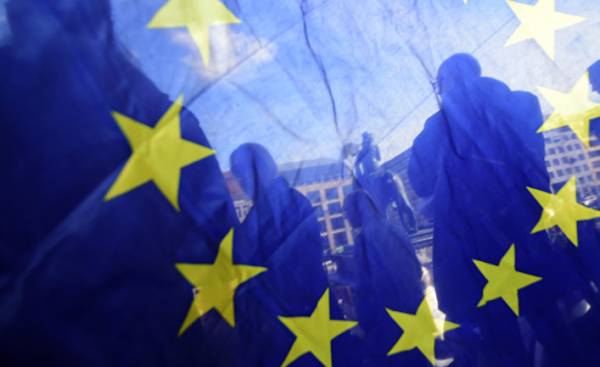
Atlantico: How changes in demographics could redraw the map of European forces?
Laurent Target: Recall that the seats in the European Parliament are allocated based on demographics of members. At present, Germany, a leader in population among the EU countries (82 million people), has 96 MEPs, while is followed by France (65 million) and Italy (60.5 per million) is present, respectively, 74 and 73 seats, and Spain (46 million) — 54. In small countries like Luxembourg (550 thousand) and Malta (400 thousand) with only 6 seats.
Thus, future demographic changes can potentially affect the number of country representatives, if the population is expected to considerably increase in some and decline in others.
Population projections for 2050 indicate contrasting trends in European countries. On the one hand they talk about significant population growth in the number of smaller States like Ireland, Sweden and Switzerland, as well as moderate growth in a large country, France. At the same time in other major countries, the population will go down more (Germany and Italy) or less tangible (Spain).
All this does not promise major changes in the balance of power in the European Union. The only exception is France, whose demographic weight will increase relative to other large States.
Anyway, the forecasts should be treated with caution because the migration variable is unpredictable. For example, no one expected the migration boom in Germany in recent years: as a result of the country’s population grew, although it would be decreasing without mass immigration.
Edouard Yusson: the Map is of interest because it indicates not matching the classic juxtaposition of contrasts. For example, it does not show the contrast between the traditionally Protestant North of Europe and inherited the Catholic tradition of the South of the continent. The split observed between North-West Europe, which includes France and a zone of demographic depression. The zone of demographic depression is a large part of the map, including Russia, however, the axis of the crisis is in Eastern Europe and runs from the former Yugoslavia to Ukraine. It is difficult to find any one factor that could serve as an explanation. Women’s access to the labour market and the support system (infrastructure, young children, maternity leave, etc.) certainly plays a significant role and explains including the relative dynamism of the Nordic countries in comparison with Germany and southern Europe. Reflected on the situation and the troubles of the twentieth century: the legacy of the former Soviet Empire and the disintegration of Yugoslavia could not affect demography. At the same time, a large number of active believers cannot explain the contrast between Poland (country of emigration) and Ireland. The common Germanic culture does not negate the contrast between Germany on the one hand, and Austria and Switzerland on the other. Note also the dynamism of looking across the Atlantic for Europe. In the centre of this zone, located UK.
— From the point of view of the emergence of new forces, what can be expected from these changes in the sphere of economy, politics and geopolitics in Europe in 2050?
Edouard Yusson: Imagine that in France in 2017 he was elected President, which goes against tradition. It could happen, right? He sees a map and says to himself that France is not interested to continue to limit yourself devoid of the unity of the Eurozone, where there is a significant demographic contrast between France and most of its partners in the economic and monetary Union. The most intelligent partner there seem to be a UK. First step: you need to make negotiations on Brexia were reasonable for both sides. France can contribute to achieving a balanced compromise between the EU and the UK.
As a second step, it is possible to imagine a scenario of changes in the Eurozone with the possibility of a soft exit from the single currency, if the rules of its functioning will fail to reform. Of course, such a scenario of political fiction. But if you think well, it is clear that France does not have population policies, but also builds the strategy based on the trends: if the South of Europe freed from the yoke of the Euro, its demography would definitely go up. The policy of cooperation with Germany and Russia in response to the “New silk road” of China could bring a number of Eastern European States, the prosperity, and even faith in the future. In front of us the map reflects the unchanging political environment. The improvement of the demographic dynamics in part of the depressed areas may be the result of a new organizational policy on the continent according to the principle of greater freedom (in contrast to the overlying oxygen machine the EU and the only alarming NATO).
Laurent Shalar: Forecasts indicate that the demographic weight of France in the European Union will increase in the coming years, provided that it will maintain its attractiveness to migrants. However this is not certain, because any worsening of the situation in a country can affect its appeal. Thus, these data should be treated with caution, especially because of the continued higher fertility than its European neighbors is not guaranteed, judging by current trends to decrease.
The consequence of increasing demographic weight in political and geopolitical terms may be a change of balance in the Duo of France and Germany: Paris will be able to actively promote their point of view among European neighbors, which is not today. On the economy, given that the difference in performance per inhabitant between France and Germany is small, in theory, French GDP should be close to German that will give Paris more influence in the approval of a conducive and enabling economic decisions. Today the ball is then ruled by Germany.
Who would in such a situation losing influence?
Laurent Shalar: the changing balance between France and Germany the increase in the weight of Paris automatically leads to reduction of weight of Berlin. In fact, demography is the main Achilles heel of Germany in this connection referred to some of the threat of German hegemony is clearly exaggerated. She simply does not have the human resources to achieve the ambitions ascribed to her. Demography is probably the main problem the country must tackle in the coming decades. And she fails constantly to use for this migration that it becomes harder to assimilate.
As for the other European countries, mostly in demographic terms is losing Eastern Europe: this is due to serious migration deficit in relations with Western Europe and low birth rates. The result is a not so large political weight of these countries (due to small population) may further decrease, especially that they have nothing to boast of in economic terms. So they are now interested in how to best take advantage of European aid, yet the situation has not changed.
Edouard Yusson: With such a demographic forecast more to lose than most of Germany, whose economic strength will be undermined by demographic decline. In any case, the authorities made it so that the country is gradually absorbed several waves of migrants: Germans from the GDR and the Soviet Union in the early 1990-ies, refugees after the wars in Yugoslavia in the late 1990s, migrants from southern Europe after the 2008 crisis, refugees from the Middle East and Africa over the past two years. It is a strategy in the spirit of the Roman Empire. It allows you to save political influence, but leads to a decline in terms of economic dynamism and innovation. Now Germany is in the center of the zone of demographic depression. The main conclusion from this map as follows: Central Europe, traditional sphere of influence of Germany, is experiencing a deep demographic decline. The only exceptions are Austria and Switzerland: there are traditionally looking for another way to be German. Germany could rely on the relative demographic dynamism of France, but its economy is paralyzed by the Euro system. In addition, Germany cut themselves off from the resurgent dynamics of the UK because it simply can not imagine “moderate Brakcet”. Thus, the policy of Germany does not match its demographics. All would push her to increase the dynamics of its immediate environment, but it does exactly the opposite: it destroyed Yugoslavia in the 1990-ies and quarreled with Russia, making a considerable contribution to Ukrainian split. Lying in front of us, the map suggests that within a generation the British economy will overtake the German.







